Unveiling the Essence of Femboys: Understanding and Embracing Gender Expression

In the spectrum of gender expression, femboys or the term femboy occupies a unique and significant position.
A femboy is an individual, often assigned male at birth, exhibiting feminine characteristics in appearance, mannerisms, or style.
This expression goes beyond a mere performative aspect, as seen in drag or crossdressing.
Rather, it’s an authentic embodiment of femininity that permeates their everyday existence.
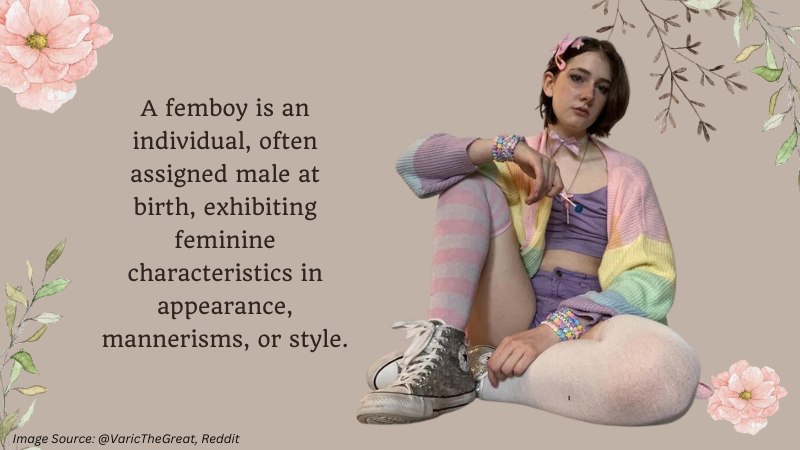
The concept of femboys intersects with the LGBTQ+ discourse, challenging conventional norms and encouraging a broader understanding of gender.
Femboys play an integral role in breaking stereotypes and encouraging society to move beyond traditional gender norms.
By embracing their gender expression, we foster inclusivity, respect, and acceptance for all individuals, recognizing the diversity and fluidity of gender expression as a fundamental aspect of human identity.
Exploring the Concept of Femboy
The Origin and Evolution of the Term
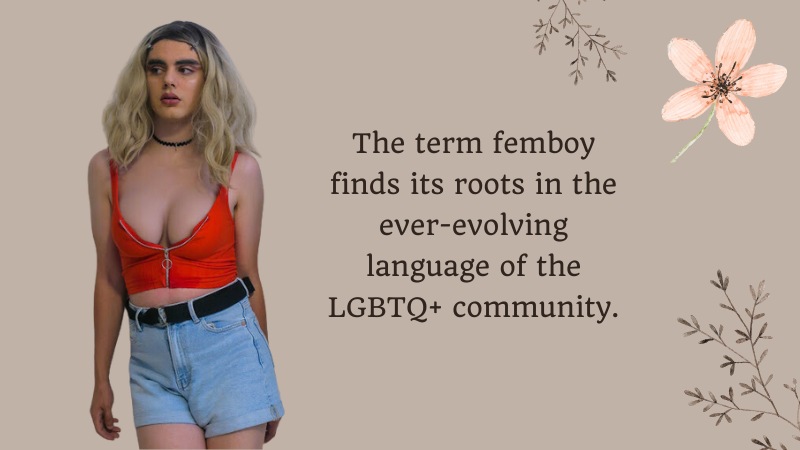
The term femboy finds its roots in the ever-evolving language of the LGBTQ+ community.
It emerged organically as a way to describe individuals who, despite being assigned male at birth, exhibit feminine characteristics as an integral part of their identity.
The exact origins of the term ‘femboy’ are hard to pin down, reflecting the fluid nature of language and identity within societal contexts.
It’s also indicative of the fact that the concept of femboy isn’t a recent phenomenon but has been present throughout history, albeit under different labels or without a specific designation.
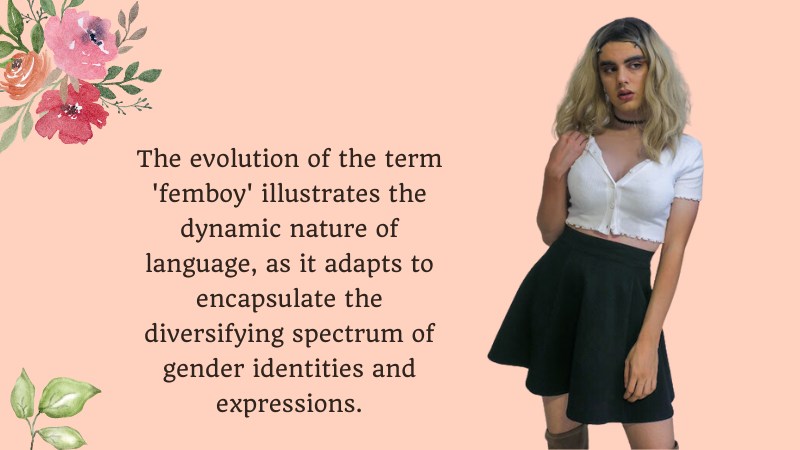
Over time, ‘femboy’ has gained broader recognition and usage, stepping out from niche circles to enter mainstream conversation.
As with many terms related to gender and sexuality, its interpretation can be subjective, varying between individuals and communities.
The evolution of the term ‘femboy’ illustrates the dynamic nature of language, as it adapts to encapsulate the diversifying spectrum of gender identities and expressions.
Its existence gives voice to a unique experience within this spectrum, fostering understanding and encouraging dialogue around the rich diversity of gender expression.
Femboy vs. Other Gender Identities: Clarifying the Differences
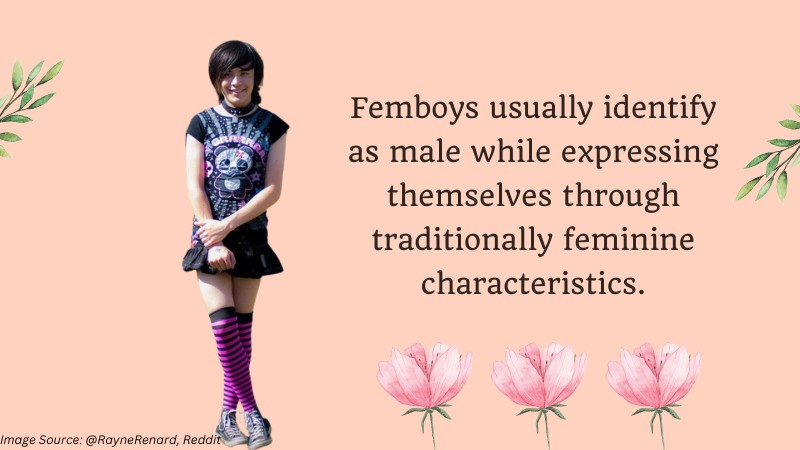
In the wide panorama of gender identities, the term femboy holds a specific place.
It is crucial to note that femboys are distinct from other identities within the gender spectrum, such as transgender women or genderqueer individuals.
The primary differentiator lies in the personal identification of these groups.
While transgender women are individuals who identify as women despite being assigned male at birth, femboys usually identify as male while expressing themselves through traditionally feminine characteristics.
It’s not about transitioning to another gender, but about embracing a mix of gender expressions that aligns with their authentic self.
On the other hand, the term ‘genderqueer’ serves as an umbrella term for non-binary identities that fall outside the conventional binary of male or female.
While some femboys may identify as genderqueer, not all do.
It depends on how they personally define their gender identity and expression.
These distinctions underscore the necessity of understanding gender as a nuanced spectrum, rather than a binary concept.
It’s essential to respect these differences, as each term represents unique experiences and identities within the broader discourse on gender.
Common Characteristics and Traits Associated with Femboys

Femboys often exhibit traits typically associated with femininity, though these can vary widely among individuals, reflecting the diversity within the community.
From the subtleties of behavior to more visible aspects like clothing, these traits challenge traditional gender norms and add layers of depth to the understanding of gender expression.
Appearance: Many femboys choose to express their femininity through their physical appearance.
This might involve wearing clothes typically associated with women, growing out their hair, or using makeup.
However, not all femboys choose to present themselves in this way, highlighting the broad spectrum of expression within the community.
Behavior: Some femboys might adopt mannerisms, speech patterns, or behaviors usually linked to femininity.
Again, this isn’t a defining trait for all femboys, as behavior varies from person to person based on their individual personality and comfort.
Self-Identification: One of the key traits of femboys is self-identification. Femboys typically identify as male, but align themselves with feminine characteristics in terms of expression.
Freedom of Expression: Femboys often embody a freedom to explore and express gender beyond traditional norms.
Their expression stands as a testament to their courage in navigating societal norms and embracing their authentic selves.
Understanding Gender Identity and Expression
The Spectrum of Gender Identity: Beyond Binary Concepts
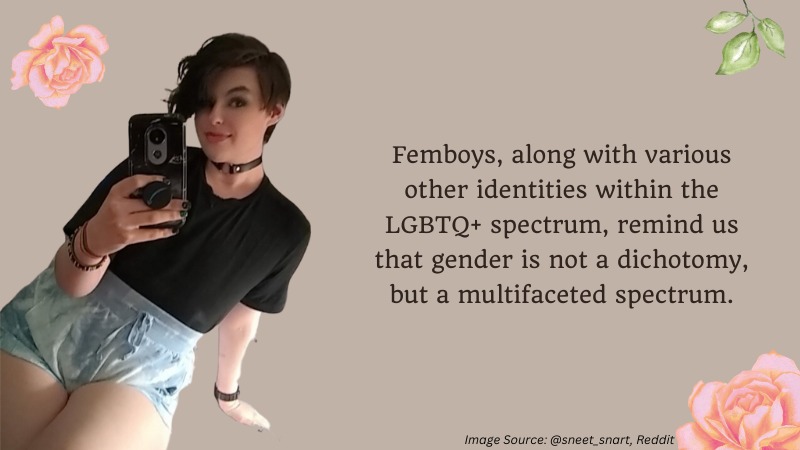
Traditional society often understands gender as a binary concept: male and female.
However, this simplistic view fails to encapsulate the complexity and richness of human gender identities and expressions.
Femboys, along with various other identities within the LGBTQ+ spectrum, remind us that gender is not a dichotomy, but a multifaceted spectrum.
Within this spectrum, individuals can identify anywhere between, beyond, or outside the traditional male and female binary.
For instance, some may identify as non-binary or genderqueer, indicating that their gender identity doesn’t fit neatly into either of the binary categories.
Femboys, in particular, identify as male but embrace and express feminine traits.
They challenge the preconceived notions of what a ‘male’ should look, act, or dress like, providing a broader perspective on what it means to be a male in contemporary society.
This concept of a gender spectrum accommodates the diversity of human experiences and identities.
It allows us to acknowledge and respect how people perceive their gender, fostering a more inclusive and understanding society.
The Fluidity of Gender Expression
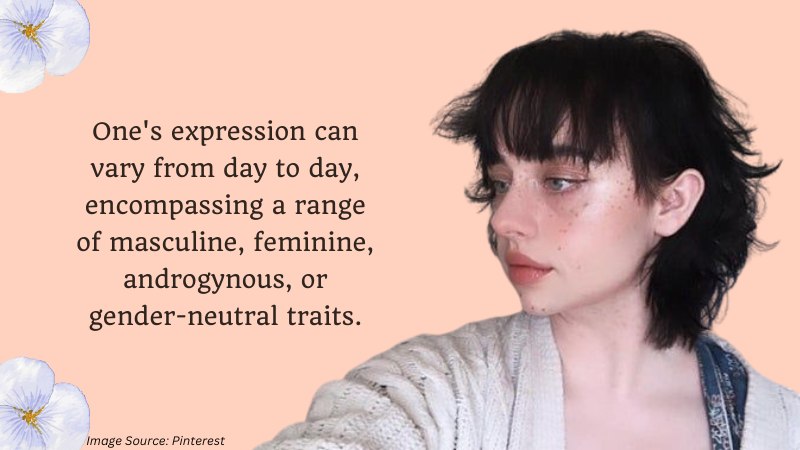
Gender expression is often misunderstood as a fixed aspect of one’s identity.
However, it is, in reality, a fluid concept that can evolve and change over time.
The existence of femboys is a testament to this fluidity.
They challenge the static views of gender by demonstrating that people can embody characteristics traditionally associated with the ‘opposite’ sex, thereby highlighting the flexibility of gender expression.
One’s expression can vary from day to day, encompassing a range of masculine, feminine, androgynous, or gender-neutral traits.
This fluidity is not indicative of confusion or indecisiveness.
Instead, it’s a powerful reflection of the individual’s exploration and expression of their identity.
It’s about dismantling the rigid structures that confine gender to a binary and embracing the diversity and dynamism of human expression.
In the context of femboys, this fluidity allows them to express their femininity while identifying as male.
It provides them with the freedom to embody different aspects of their identity in a way that feels most authentic to them.
Intersectionality: Examining the Overlapping Identities of Femboys
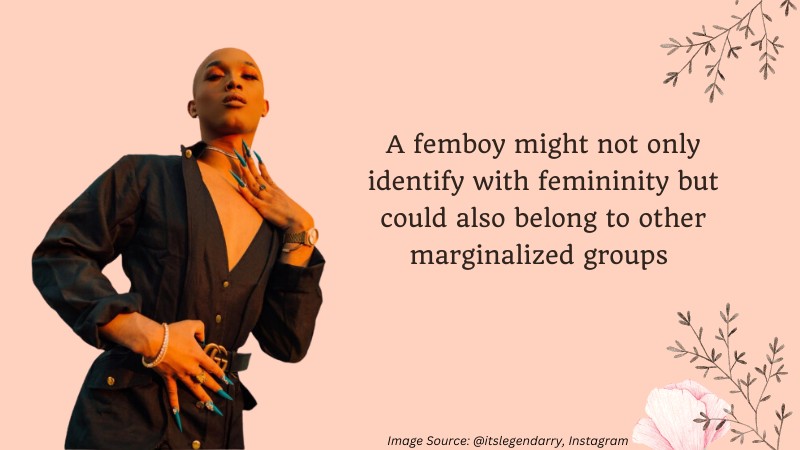
The concept of intersectionality is crucial to understanding the unique experiences of femboys.
Coined by Kimberlé Crenshaw, intersectionality refers to the interconnected nature of social categorizations such as race, class, and gender, creating overlapping systems of discrimination or advantage.
For femboys, intersectionality could mean navigating the world with multiple overlapping identities.
A femboy might not only identify with femininity but could also belong to other marginalized groups – such as being a person of color, disabled, or part of the working class.
These various identities don’t exist separately but interact and influence the individual’s experience.
Being a femboy of color, for example, could entail grappling with both homophobia and racism.
Recognizing these intersections is crucial for understanding the multi-layered experiences.
Empowering Femboys: Celebrating Individuality and Self-Expression
Embracing Diverse Forms of Gender Expression
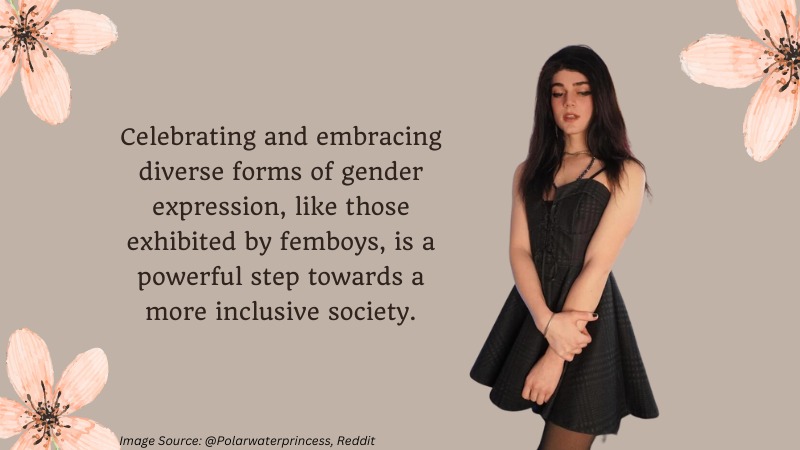
In a society often limited by binary perspectives, femboys embody the beauty of diverse gender expression.
They challenge societal norms and offer a vivid testament to the richness of human identity, demonstrating that self-expression isn’t confined to rigidly defined categories.
Celebrating and embracing diverse forms of gender expression, like those exhibited by femboys, is a powerful step towards a more inclusive society.
It empowers individuals to live authentically, unshackled by the expectations and stereotypes attached to their assigned gender.
This freedom is not only liberating at a personal level but also contributes to a broader societal shift in understanding and respecting gender diversity.
The Importance of Inclusivity and Acceptance
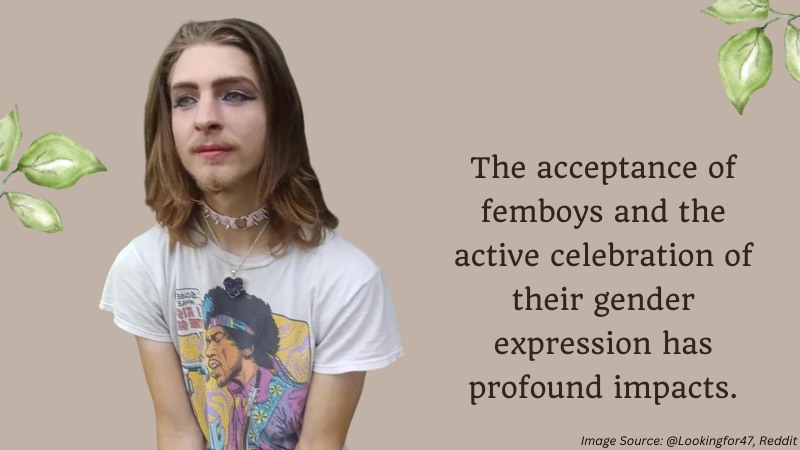
When we foster inclusivity, we empower femboys, and indeed all individuals, to live openly and authentically.
It paves the way for greater visibility of diverse gender expressions, which can challenge stereotypes, disrupt prejudice, and promote understanding. Acceptance not only validates individuals’ identities but also enriches the society as a whole by embracing diversity.
The acceptance of femboys and the active celebration of their gender expression has profound impacts.
It empowers individuals, reduces stigma and discrimination, and contributes to the overall mental health and well-being of individuals who identify as femboys.
Furthermore, it sets a precedent for tolerance, understanding, and respect for diversity, pushing society towards being more accepting and inclusive.
The Positive Impact of Visibility and Representation
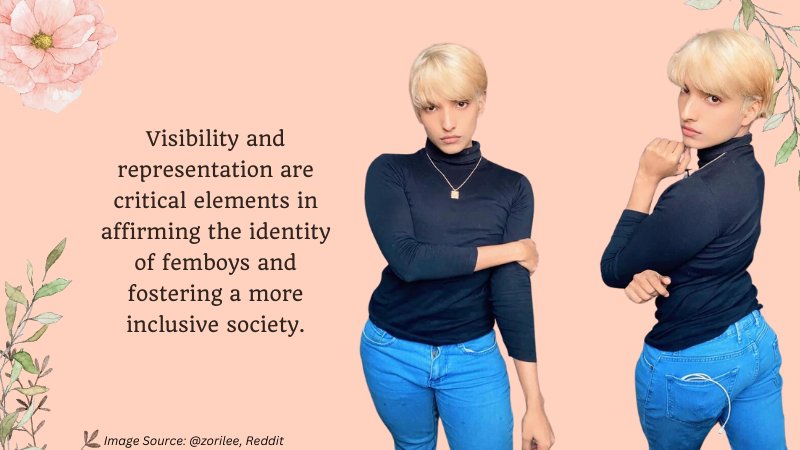
Visibility and representation are critical elements in affirming the identity of femboys and fostering a more inclusive society.
Having their stories and experiences shared in media, politics, and other public platforms not only validates their existence but also helps debunk stereotypes associated with them.
This visibility enables a more nuanced understanding of their identities and experiences, prompting a broader societal shift towards acceptance and inclusivity.
Moreover, representation provides relatable role models for femboys, instilling a sense of belonging and affirming their identity.
It reinforces the idea that their gender expression is not a barrier to achieving their dreams, fostering a positive self-image.
At the same time, visibility fosters empathy and understanding in the broader community, contributing to a more inclusive and accepting society that celebrates diverse gender expressions.
Challenges Faced by Femboys
Discrimination and Prejudice
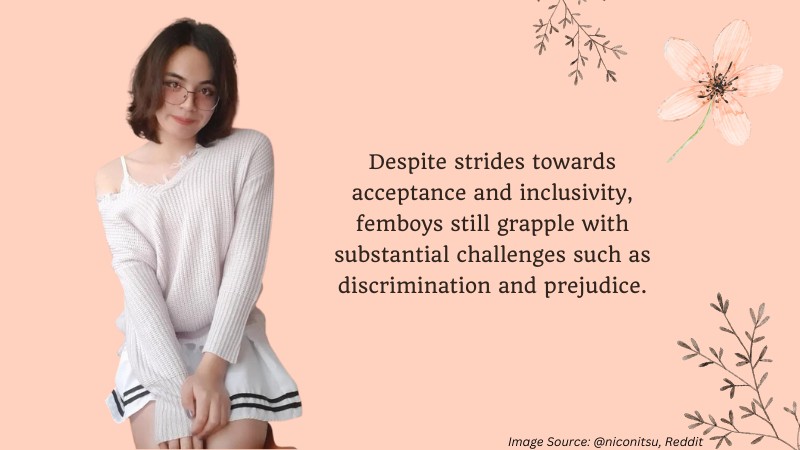
Despite strides towards acceptance and inclusivity, femboys still grapple with substantial challenges such as discrimination and prejudice.
Owing to rigid societal norms and misconceptions about their gender expression, femboys often confront bias and exclusion in various spheres of life, ranging from social interactions to employment and access to services.
This discrimination can lead to social marginalization, economic difficulties, and mental health concerns.
Additionally, femboys may internalize societal attitudes, leading to self-stigma and feelings of guilt or confusion about their identity.
Therefore, addressing these prejudices is crucial to not only foster societal acceptance but also ensure the mental well-being of femboys.
By tackling these biases, we can work towards a more inclusive society that allows femboys and indeed everyone to express their authentic selves without fear of judgement or discrimination.
Internal Struggles and Self-Acceptance
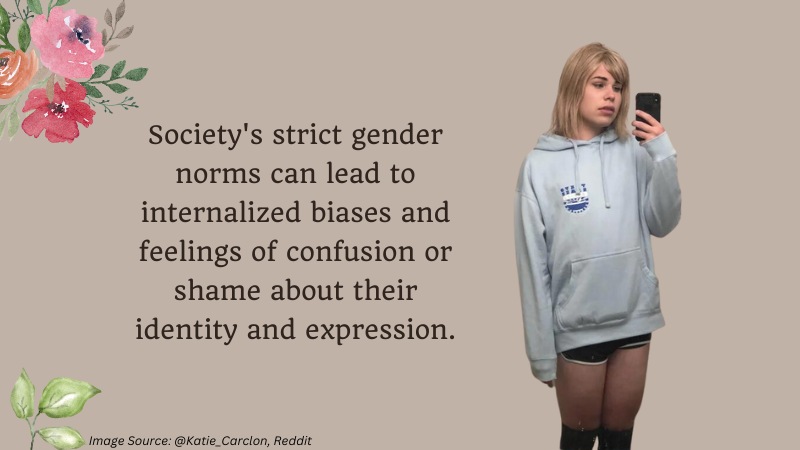
In addition to external challenges, femboys often face internal struggles and the journey towards self-acceptance.
Society’s strict gender norms can lead to internalized biases and feelings of confusion or shame about their identity and expression.
Femboys may experience isolation and fear of rejection, grappling with questions of authenticity and societal expectations.
Overcoming these internal struggles and embracing their true identity requires a supportive environment and access to resources such as counseling and affirming communities.
By fostering acceptance and understanding, we can empower femboys to navigate their internal challenges, embrace their identity with confidence, and lead fulfilling lives true to themselves.
Building Supportive Communities and Resources
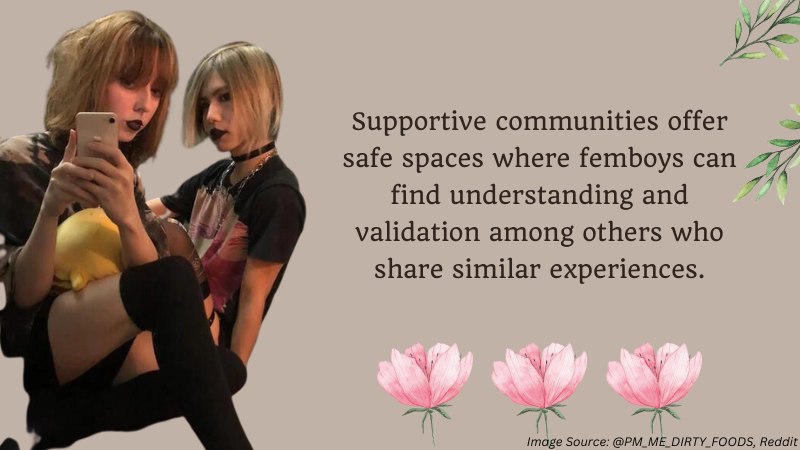
Building supportive communities and providing accessible resources are crucial in addressing the challenges faced by femboys.
Supportive communities offer safe spaces where femboys can find understanding and validation among others who share similar experiences.
These communities foster a sense of belonging and provide the necessary support for femboys to navigate their journey towards self-acceptance.
Additionally, access to resources such as counseling services, support groups, and educational materials tailored to the needs of femboys can be instrumental in providing guidance and assistance.
These resources empower femboys to overcome challenges, build resilience, and establish strong support networks.
Frequently Asked Questions (FAQs)
What Does it Mean to Be a Femboy?
Being a femboy means identifying as male but choosing to express oneself through traditionally feminine characteristics.
This expression varies among individuals and is often incorporated into their daily lives.
Are Femboys the Same as Transgender Individuals?
No, femboys and transgender individuals are not the same.
While femboys usually identify as male and express femininity, transgender individuals identify as a gender different from the one assigned to them at birth.
How Can I Support My Friend or Partner Who Identifies as a Femboy?
Support can come in various forms such as using their preferred pronouns, respecting their gender expression, and standing up against any discrimination they may face.
Open conversations about their experiences and needs can provide valuable insight into how best to offer support.
Can Femboys Only Be Assigned Male at Birth?
The term ‘femboy’ is generally used to refer to individuals who were assigned male at birth.
However, the core aspect of being a femboy is the expression of femininity, and individuals should have the freedom to identify as they feel most comfortable.
- Best Crossdresser Destinations to Visit in Africa
- 10 Best LGBTQ+ Manga 2024
- How To Become a Drag Queen Star? A Step-By-Step Guide to Creating Your Drag Queen Persona
- Top 5 Reasons Why People Crossdress: A Deep Dive into the Psychology
- Passing As a Crossdresser: What Does It Mean to Come Out?
- Penis Play and Penis Size for FTM Crossdressers
Established in 2009, We are a recognized manufacturer and seller of professional crossdressing products.
It is our aim to become not just the most creative manufacturer but also a very considerate seller, as we provide the best quality products for crossdressers all around the world.

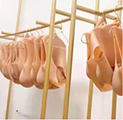









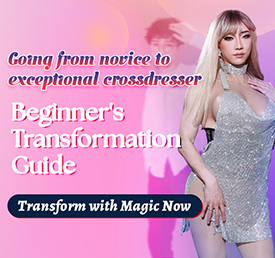

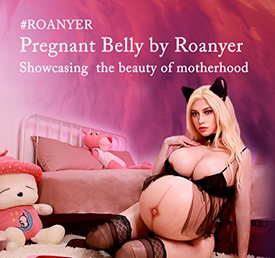







 Breast Forms
Breast Forms  Body Suit
Body Suit  Realistic Mask
Realistic Mask  Femini Girdle
Femini Girdle Hip & Butt Enhancement (8)
Hip & Butt Enhancement (8) Penis Prosthesis
Penis Prosthesis Fake Muscle
Fake Muscle Bikini
Bikini  Wig
Wig  Corsets
Corsets Course
Course service@roanyer.com
service@roanyer.com +8618652200711
+8618652200711 Facebook
Facebook YouTube
YouTube Twitter
Twitter Instagram
Instagram




